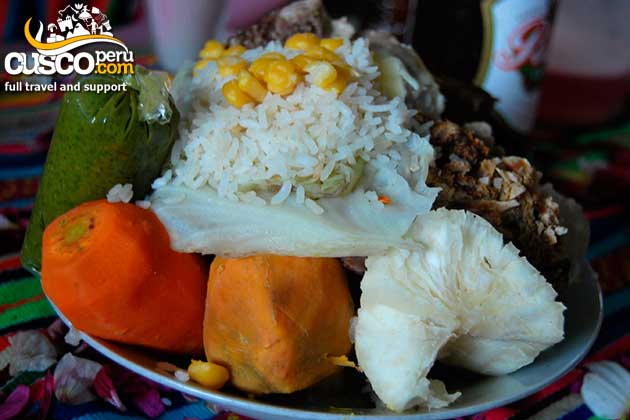THE JOY, THE COLORS AND THE FLAVOR OF THE CUSQUEÑOS CARNIVALS
February begins with a beautiful month as the others, with days of rain and plenty of sunshine. It is characterized for many reasons, but primarily for its festivals with lively dances, typical food, colorful costumes and locations as a meeting to celebrate the customs and traditions of the residents of Cusco and visitors.
One of the most representative parties of Cusco festivals are carnivals; the week begins with celebrations for party compadres and comadres, where people celebrate the bonds of friendship. Then, children, youth and adults have to live with joy and great intensity carnival party that becomes the party of all. In Cusco, mainly in the provinces of the Sacred Valley, carnivals are living in different communities; with colorful dances, abundant cotillion (confetti of many colors), white flour and water. As part of the Cusco gastronomy families in housing are busily preparing to develop the "T'impu" or "T'impusca" which becomes a traditional dish tasted like hot lunch.

This favorite dish during carnival time; it is prepared in a huge pot, which are steamed, lamb, accompanied by beans, tubers and legumes of the region, the highlands and jungle of Cusco; among which are the potato, cassava, white maize or "choclo" the moraya, sweet potato, virraca, among other traditional ingredients.
This delicious lunch box is served on two plates, one containing a hot soup and pleasant, ideal to consume while the typical rain falls this month; and the other dish containing the solid ingredients steamed. Tradition demands accompany these delicious dishes, with a generous serving of spicy chili or commonly called "uchucuta" flavor.
Prior to the celebration of carnivals in Cusco, which is two weeks before it takes place the day of the compadres and comadres on the most popular neighborhoods in the city. During this traditional festival is commonly seen on the doors of houses and electric lighting poles; They are hanging rag dolls, representing popular characters or to the neighbors, in an intent to satirize.

Meanwhile in the provinces of Cusco, mainly in the Sacred Valley, located on the shores of the Vilcanota River; residents of rural communities dressed in their traditional costumes, with bright colors, to move to the city. We also recall that in the villages of the Andes, Carnival parties constitute a significant date which encourages and suggests formalizing romances among young people, and elsewhere is also favorable for date with veneration to thank "Pachamama "or Mother Earth, for the fruits granted.
Other districts in the Sacred Valley, celebrate carnival celebrations with peculiar dance as "yunza" between single and married; which involves dancing around a tree, which previously has been hanging in its branches, gifts and balloons. While women and men dance around the tree, one by one they cut down the tree trunk with an ax until the tree falls to the floor and the dancers can pick up the gifts. In the towns of Coya, Pisac and Urubamba Valley thereof; this date is preponderant and especially its traditional meaning.

Among joyful passacaglias and food festivals where also the T'impu or "pot" is sold, in squares and streets. February 26 takes place commonly called "Carnival auction or eighth" accompanied by a cheerful gazelle in the Plaza de Armas, a party that brings together the winners of the dances of different communities, who around the music of the huaynos and festive songs, play with water, flour and colored paper streamer inevitable at this date, to express their joy.
This unique and lively form of cultural expression, enclosing identity and strong roots to traditional customs; Cusco celebrates the carnival, a festival of joy, cuisine, dance and music, which gathers every year to its inhabitants and visitors from all over the world.

Happy passengers